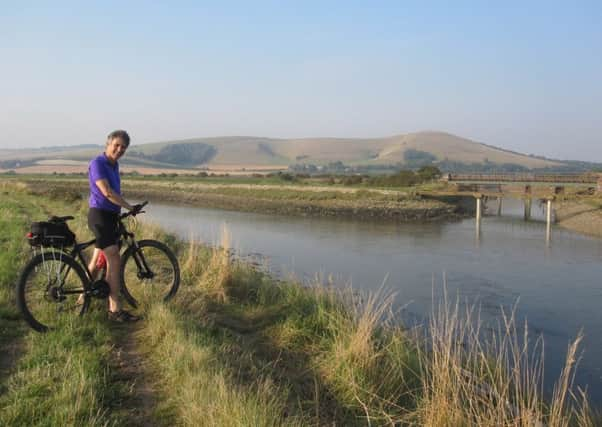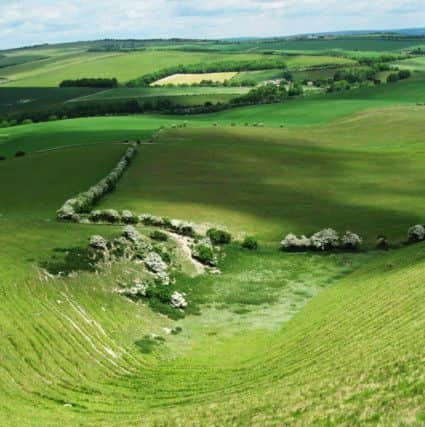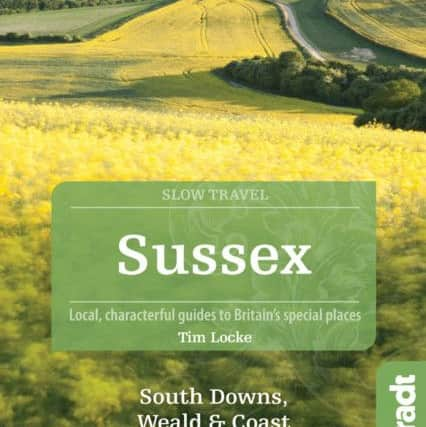Explore '˜slow Sussex'
This article contains affiliate links. We may earn a small commission on items purchased through this article, but that does not affect our editorial judgement.


Tim Locke was commissioned by Bradt Travel Guides, to create a concept that promotes Slow Tourism, the theme for the new Sussex guide book Slow Travel: Sussex.
To Tim, slow tourism requires ‘digging under the surface and looking at local distinctiveness, to find out what makes one place special over another.’
Advertisement
Hide AdAdvertisement
Hide Ad“Travel less and see more by finding reasons to spend longer in one area,” believes Tim.


Part of that would be exploring local building styles or local food, or talking to experts you meet along the way.
In Sussex, there are plenty of famous but obvious places to visit, such as Wakehurst Place and The Royal Pavilion in Brighton.
Tim explained how at Wakehurst Place, he discovered a ‘very lovely little museum’ called The Priest House Museum which he’d never heard of before.
Advertisement
Hide AdAdvertisement
Hide Ad“I got to speak to a man there who explained about the anti-witch markings which cover the ancient cottage,” reveals Tim.


“It’s absolutely fascinating.”
Similarly Batemans, a National Trust property near Burwash that Tim thought he knew well, proved to have room for discovery.
“There are lots of archaeological features poking around in the woods...if you know where to look,” he says.
Tim soon realised how easy it is to miss everything. Having been doing some work outside of Sussex, on his return he recognised the diverse expanse of beauty on our doorstep.


Advertisement
Hide AdAdvertisement
Hide Ad“When you come back to Sussex, you realise it doesn’t have one defining character, it’s a whole lot of different bits and pieces,” explains Tim.
“I think it’s the way the landscape is so intimate and changes so suddenly, there’s such a nice sense of proportion.”
Having lived in Sussex for over 20 years, Tim still discovers places within five miles of his house.
“When it came to doing Slow Sussex, I realised there was so much to cover, so rather than doing everywhere in superficial detail,” he reveals.


Advertisement
Hide AdAdvertisement
Hide Ad“I decided it would be more rewarding and more useful to cover specific areas in a lot of detail in a way that hasn’t been done elsewhere.”
Tim apologises for not covering every inch of the county, but from first picking up the book, it is obvious that because of this, you get a very genuine and well-researched opinion.
“What we try to do with the book is present it all as a consistent viewpoint, showing things that have never appeared in guide books before,” says Tim.
Of his research for the book, Tim had two particular favourites.
Advertisement
Hide AdAdvertisement
Hide AdThe first is Woolbeding Gardens near Midhurst, which only opened a few years ago. Tim described how there’s an ‘absolutely lovely little combination of wild gardens and formal arrangements’.
“Then there’s a beautiful semi-wooded part around a lake and the whole thing has been put together with such enthusiasm and fun,” smiles Tim.
“I found it to be one of the highlights.”
Secondly was the English Martyrs catholic church in Goring-by-sea.
Tim heard about it from his mother-in-law, who had been evacuated to Goring and recommended a visit.
Advertisement
Hide AdAdvertisement
Hide AdDespite looking ‘very boring and not dissimilar to an aircraft hangar’ from the exterior, the inside shares the proportions of the Sistine Chapel. One of the congregation has therefore, recreated a complete reproduction of the Sistine Chapel’s breathtaking ceiling, at two-thirds scale.
“It sounds rather kitsch, but it’s incredible,” enthuses Tim.
“That to me was a brilliant bit of serendipity, in Goring of all places.”
At a time when it is becoming very apparent that we need to make a change in the way we consume and travel, Tim hopes that people will be more open to adopting forms of slow travel.
Advertisement
Hide AdAdvertisement
Hide Ad“I think people realise Earth is a very fragile place and we need to take a lot of care of it,” he explains.
“There’s an awful lot to be said for doing tourism in a way that doesn’t hurt the environment and actually contributes to it.”
The visitors who come to the South Downs National Park are majority day visitors, and Tim believes it is essential to ‘encourage people to stay longer or come more often’.
“A lot of people are missing a trick when they don’t spend longer here exploring,” he says.
Advertisement
Hide AdAdvertisement
Hide Ad“You could be 20 miles from Gatwick and be in the middle of nowhere in the High Weald.”
His tip for invoking slow travel into a busy life is to not try to do too much.
“Just concentrate on one or two little things, even just the area around where you live, there’s always going to be something,” assures Tim. “Don’t simply go to the most obvious places either, and most importantly, make time to talk to people.”
Slow Travel: Sussex by Tim Locke. Published by Bradt Travel Guides, www.bradtguides.com, £12.99
This first appeared in the April edition of etc Magazine pick up your copy now.